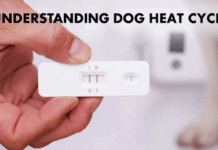Last Updated on January 31, 2024 by Dog Lover
Are Bully Sticks Good for Dogs? A Vet’s Perspective
As a dog owner, the endless quest for healthy and engaging treats can feel like chasing your tail. Enter the ever-popular bully stick, a seemingly straightforward chew bone that promises hours of tail-wagging joy.
But are bully sticks merely canine pacifiers, or do they hold merit in a vet’s discerning eye? Let’s unravel the hype and sniff out the facts.
Firstly, bully sticks boast an undeniable appeal. Made from the dense muscle tissue of beef bulls, they offer a satisfying chew that massages gums and helps keep teeth clean.
This natural cleaning action comes in handy, especially for pups prone to plaque buildup. Additionally, the act of chewing itself promotes dental health by scraping away tartar and stimulating saliva production.
However, not all bully sticks are created equal. Choosing ones sourced from reputable manufacturers and free of artificial additives is crucial.
Be wary of bleached or dyed sticks, as these might harbor chemicals detrimental to your dog’s health. Opt for natural, minimally processed options to ensure a safe and satisfying chew experience.

Now, the burning question: are bully sticks a veterinarian’s thumbs-up treat? The answer, as with most things in life, is nuanced. Here’s a pawsitive breakdown:
Pros:
- Dental health: As mentioned, the chewing action cleans teeth and promotes oral hygiene.
- Mental stimulation: Bully sticks provide boredom-busting entertainment, keeping your dog mentally engaged.
- Reduced anxiety: Chewing can be a calming activity, helping dogs manage stress and anxiety.
- Natural source of protein: Bully sticks offer a protein boost, supporting overall health and development.
Cons:
- Choking hazard: Choose appropriate sizes based on your dog’s breed and chewing style to avoid choking risks.
- Digestive issues: Some dogs might experience digestive upset, especially from ingesting large chunks. Monitor your dog for any adverse reactions.
- Excessive chewing: Some pups can become “addicted” to the chewing sensation, neglecting other activities. Moderate bully stick usage to avoid dependency.
The Vet’s Verdict:
In moderation, bully sticks can be a healthy and enriching treat for most dogs. However, prioritize quality, supervise chewing sessions, and be mindful of individual pup reactions. As a responsible dog owner, consult your veterinarian to assess your dog’s specific needs and determine if bully sticks fit their dietary and chewing profile.
Remember, variety is key to a happy and healthy dog. So, go ahead, toss that bully stick (responsibly!), but also explore other enrichment options like puzzles, walks, and playtime. After all, a truly satisfying life for your furry friend goes beyond just chasing after the next chew toy!

What Are Bully Sticks?
Before we dive into the benefits and potential concerns surrounding bully sticks, let’s first understand what they are. Bully sticks are a type of dog chew made from the pizzle, or the penis, of a bull. They are a popular choice among dog owners due to their long-lasting nature and the enjoyment they bring to our four-legged companions.
The Benefits of Bully Sticks
There are several reasons why bully sticks are considered a great treat for dogs:
- Bully sticks are natural and free from artificial additives, making them a healthier alternative to many commercial dog treats.
- They are highly digestible, reducing the risk of digestive issues in dogs.
- Bully sticks provide mental stimulation and help satisfy a dog’s natural instinct to chew.
- They can promote dental health by helping to remove plaque and tartar buildup.

Potential Concerns
While bully sticks offer many benefits, it’s essential to be aware of a few potential concerns:
- Bully sticks can be high in calories, so it’s crucial to monitor your dog’s overall calorie intake to prevent weight gain.
- Some dogs may have allergies or sensitivities to certain proteins, so it’s important to introduce bully sticks gradually and observe any adverse reactions.
- As with any chew, there is a risk of choking or gastrointestinal blockage if your dog swallows a large piece. Always supervise your dog while they enjoy their bully stick.

Frequently Asked Questions
Can puppies have bully sticks?
Yes, puppies can have bully sticks, but it’s essential to choose an appropriate size and supervise them to ensure they don’t swallow large pieces.
How often can I give my dog a bully stick?
The frequency of giving your dog a bully stick depends on their individual needs and dietary requirements. It’s best to consult with your veterinarian to determine the appropriate frequency for your dog.
Are there any alternatives to bully sticks?
Yes, there are several alternatives to bully sticks, such as dental chews, raw bones, and interactive toys. Experimenting with different options can help you find the best fit for your dog.
Can bully sticks cause stomach upset?
While bully sticks are generally well-tolerated, some dogs may experience stomach upset if they consume them too quickly or in large quantities. If you notice any digestive issues, it’s best to consult with your veterinarian.
Are there any safety precautions I should take when giving my dog a bully stick?
Absolutely! Always supervise your dog while they enjoy their bully stick to prevent choking or swallowing large pieces. Additionally, choose bully sticks from reputable sources to ensure they are of high quality and free from harmful additives.
Conclusion
Bully sticks can be a fantastic treat for dogs, offering both physical and mental stimulation. However, it’s crucial to consider your dog’s individual needs, monitor their calorie intake, and supervise them while enjoying their chew. Remember, when in doubt, consult with your veterinarian for personalized advice.
Sources:
1. UC Davis School of Veterinary Medicine – Frequently Asked Questions about Bully Sticks

















